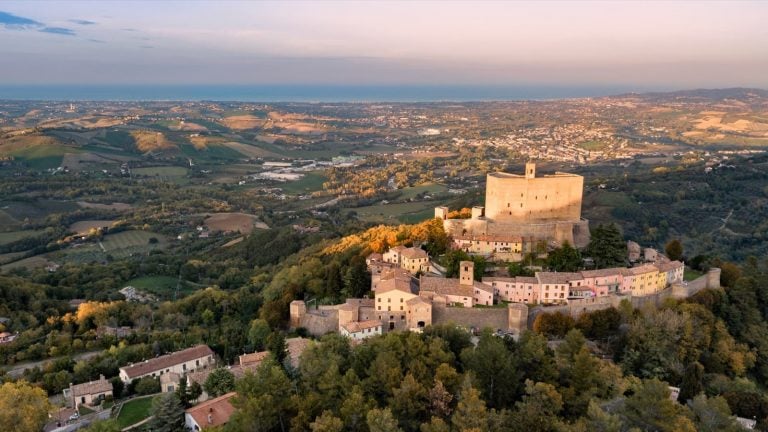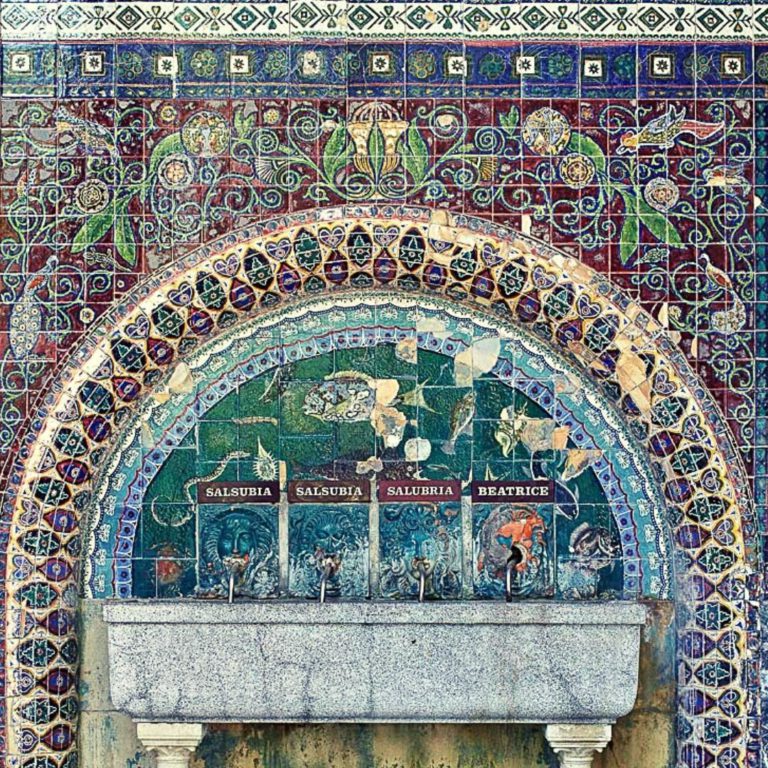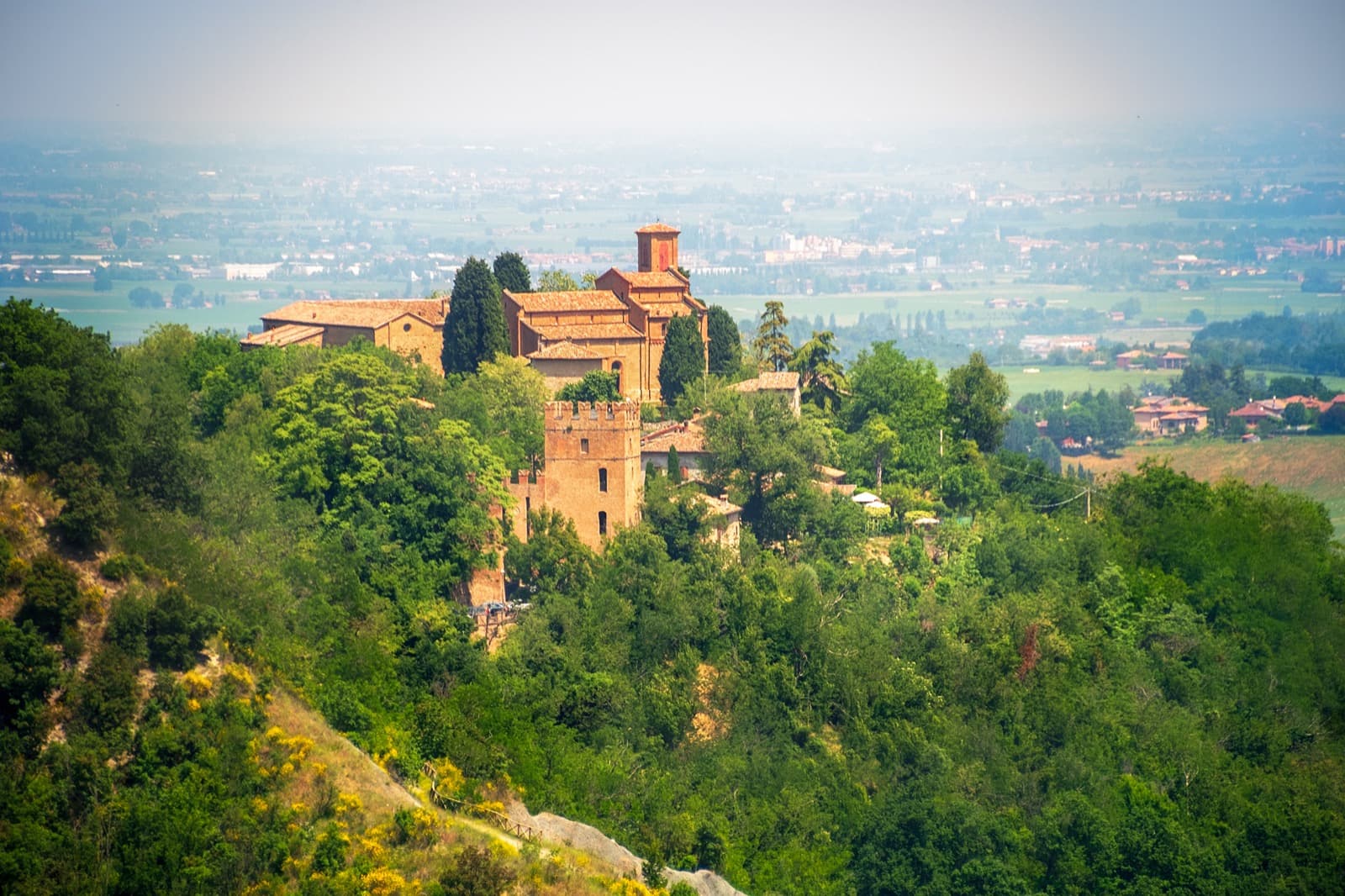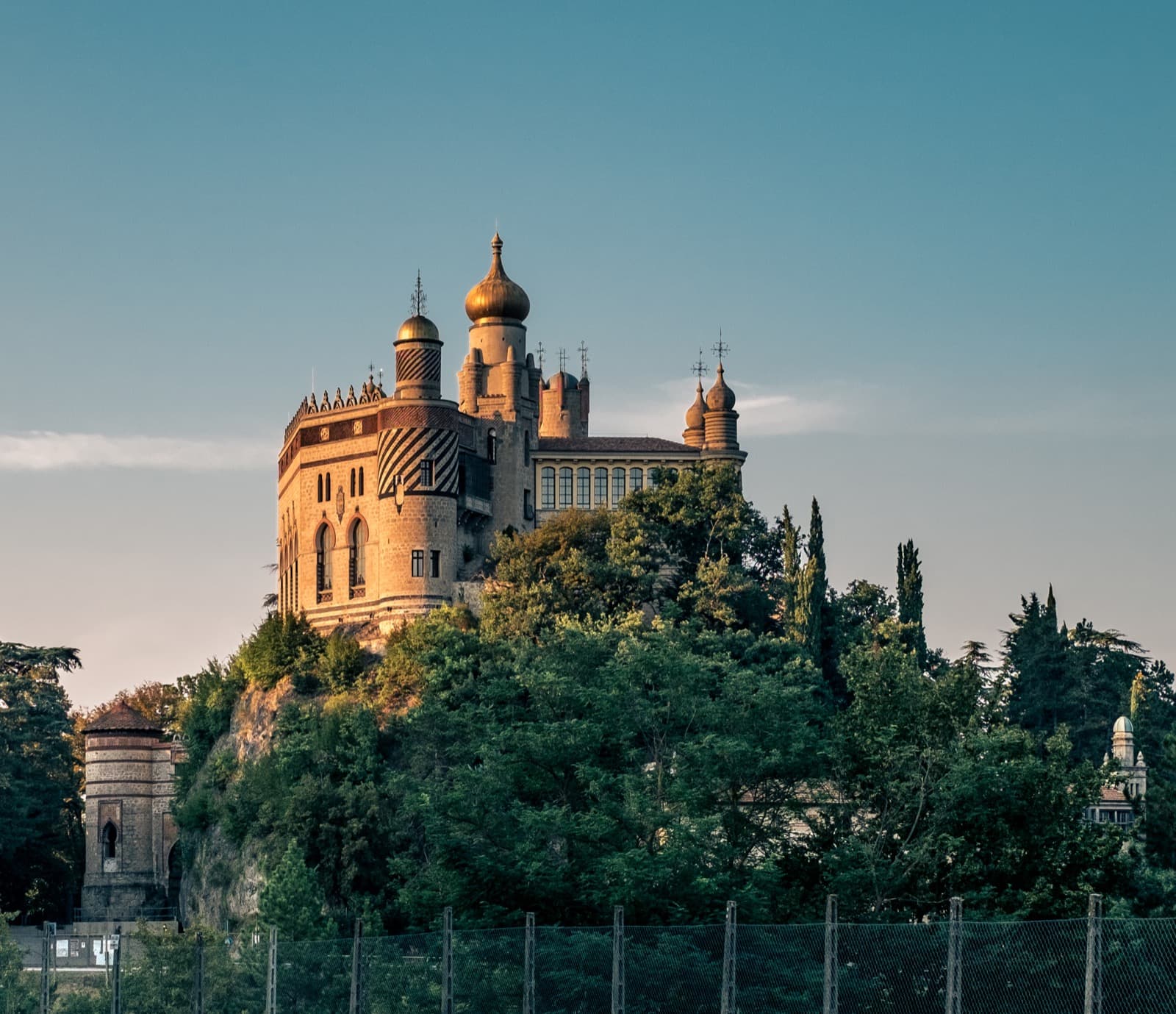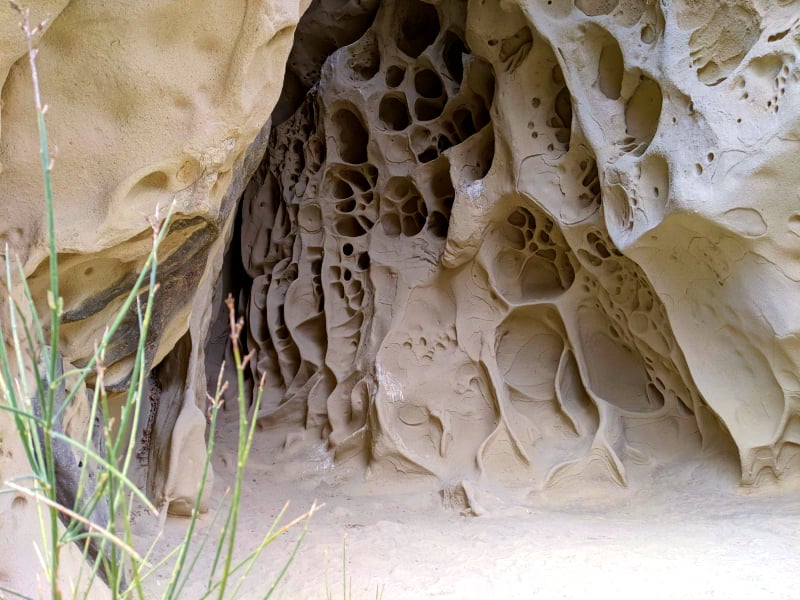Would you like to feel like a lord or lady, waited on and pampered in a luxurious setting?
If you’re looking for a relaxing and cultural break, here are the two castles in the province of Bologna with thermal spas within 30 km.
Castles and Spas Near Bologna
The Bentivoglio Fortress in Bazzano
Legend has it that the Bentivoglio Fortress in Bazzano was built by the order of Matilda of Tuscany, who actually inherited it when she was nine. The castle played a significant role in the country’s defense against the barbarian hordes since the year 1000, even though the date is not firmly established by evidence.
The people of Bologna conquered and destroyed the castle in 1247, then brought what was left of it to the nearby town of Monteveglio to build a tower for their officials. The Castle was then rebuilt by Azzo VIII d’Este between the end of 1200 and the beginning of 1300.
Its current Renaissance style is due to Giovanni II Bentivoglio, who transformed the castle into a country’s summer residence.
Over the centuries, the building has served different functions: the seat of the so-called Capitanato della Montagna, a prison (poet Ugo Foscolo was imprisoned here in 1799), a theatre, a barracks, a school, and even a private residence.
Today it also hosts the “Arsenio Crespellani” Civic Archaeological Museum, which houses findings dating back to the period from the Mesolithic to Renaissance and coming from the Samoggia, Lavino, and Reno valley.

The Sforza Fortress in Dozza
The Fortress of Dozza, dating back to the Middle Ages, is a monumental complex which Caterina Sforza turned into a real fortified castle and then a residence during the Renaissance.
Due to its strategic position, on the border between Bologna (Emilia) and Romagna, many battles have been fought over it throughout the centuries. The current layout of the building (courtyards, vestibule, entrance hall, and stairs) and the arrangement of the main floor dates back to the Campeggi family, who mainly used the castle for diplomatic engagements and lived there until 1960.
The castle now looks like a house-museum and offers a guided tour divided into three different paths: the medieval and renaissance Castle, the renaissance Residence, and the 18th-century Residence. Last but not least, it also hosts the Regional Enoteca, one of the cornerstones of Emilia-Romagna’s food and wine tradition.

If you decide to visit Bazzano, you will have the chance to enjoy the city’s thermal spas, Terme San Luca and Terme Felsinee, and the many thermal beer treatments they have to offer. Sounds good, doesn’t it?
If you choose Dozza, you will have the chance to unwind in one of its hamlets: in Emilia’s plain at Terme di Castel San Pietro, on Bologna’s hills at Terme dell’Agriturismo, or in Romagna’s inland at Terme di Riolo, where you can also visit the Riolo Fortress.
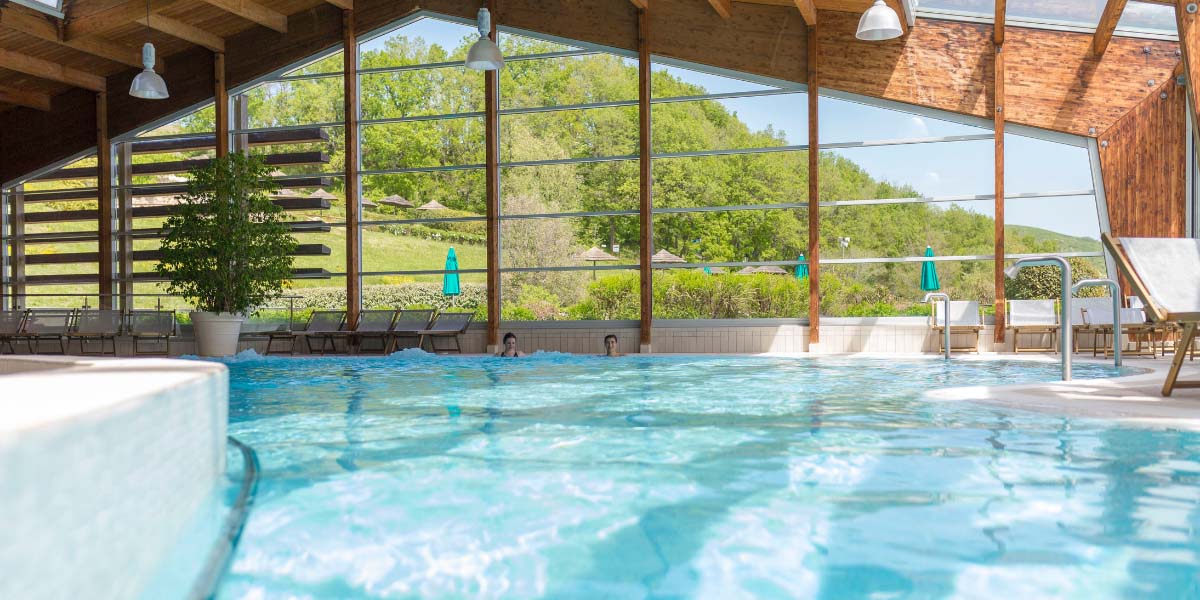
Castles and Spas Near Modena
Spezzano Castle
The Spezzano Castle is located in Fiorano Modenese, on the lower hillside. Dating back to the Middle Ages, it was transformed by the Pio di Savoia family into a noble palace in 1529. Its overall appearance is that of an elegant country residence, designed to pleasantly welcome guests, with a beautiful Renaissance porticoed courtyard.
Inside, two important 16th-century series of frescoes, depicting villages, towers and castles of the feud, which emphasise the grandeur of the noble residence.
Today, the mansion houses the Fiorano Ceramics Museum – located on the first floor and in the basement – and the town vinegar cellar in the pentagonal tower, once housing the prisons.
The castle-villa is surrounded by a romantic 19th-century park, with a picnic area and a cycle-pedestrian leading path from the castle to the Salse di Nirano Nature Reserve and the castles of Nirano and Montegibbio. Visiting it offers an impressive glimpse of the entire area.
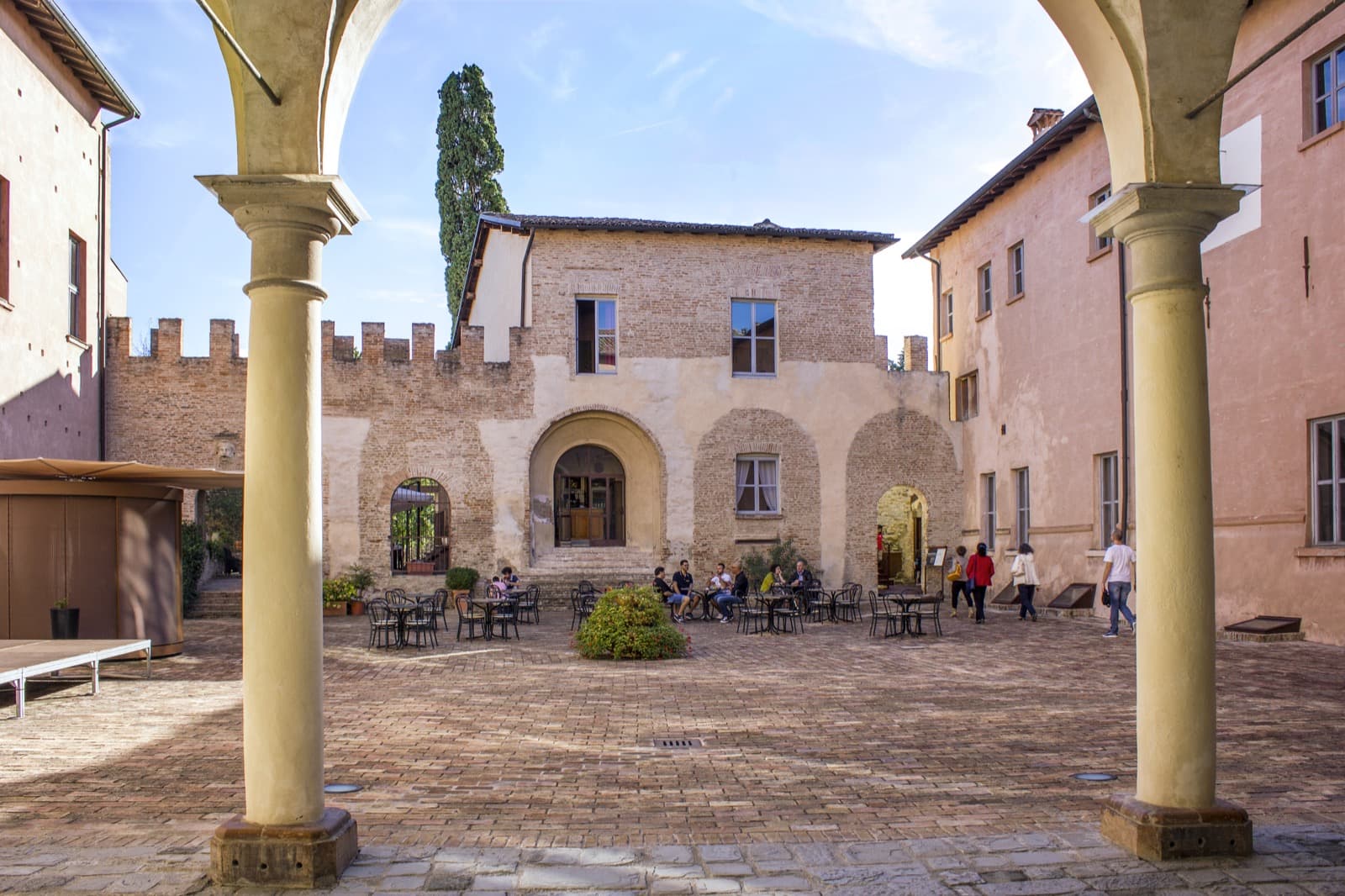
Formigine Castle
The Formigine Castle is a perfect example of the architectural evolution from a medieval fortification (the rocchetta) to a Renaissance stately residence (the Marquis Calcagnini’s palace).
Recent excavations in the building, a fascinating place featuring swallow-tailed battlements and corbels, have revealed that the moat separating the castle from the medieval village once stood at the site of the park.
The former guardhouse area, where the drawbridges were manoeuvred, connects the rocchetta to the marquis’ palace.
The Castle Museum is also worth visiting. Its sounds and voices take the visitor back to the medieval village. if you wish to admire the surrounding panorama, just climb to the top level of the south-east tower.
Noble families that have lived here include the Adelardi, the Visconti, the Estensi, the Pio and the Marchesi Calcagnini.
Rangoni Fortress in Spilamberto
The Rangoni Fortress in Spilamberto was erected by the people of Modena to control the border between Bologna and the Panaro River. The entrance to the castle, now facing the town, was originally in the opposite location, facing the river.
The rectangular plan reveals the castle’s origin. However, transformations into a noble residence are evident. They were mostly due to the Rangoni family, who owned it for over 500 years, such as the 17th-century frescoes and staircase and the 18th-century balcony.
Its location by the river and not far from the hills has always given it the status of a place of delight. The original beauty of the Cortile d’Onore, recently restored, is the setting for the Corte del Gusto, a place to enjoy some excellent food and wine.
Vignola Fortress
Built on limestone cliffs overhanging the river between the end of the Carolingian dynasty and the Hungarian invasion, the Vignola Fortress is today arranged on five floors, from the basement to the patrol walkways.
The two families that contributed most to the transformation from defensive structure to noble residence were the Contrari and Grassoni.
The architectural stratification is also highlighted by the different materials used: from the river stones of the oldest part to the terracotta bricks of later periods. Each floor served a different function: the ground floor was for state affairs, the first floor for private life, the second for troops and servants.
The basement, once used as a storeroom, was also used as an air raid shelter during the last world war. While the Round Walks, primarily for control purposes, were not originally covered as we see them today. Of the three towers, the one called Nonantola is the oldest.
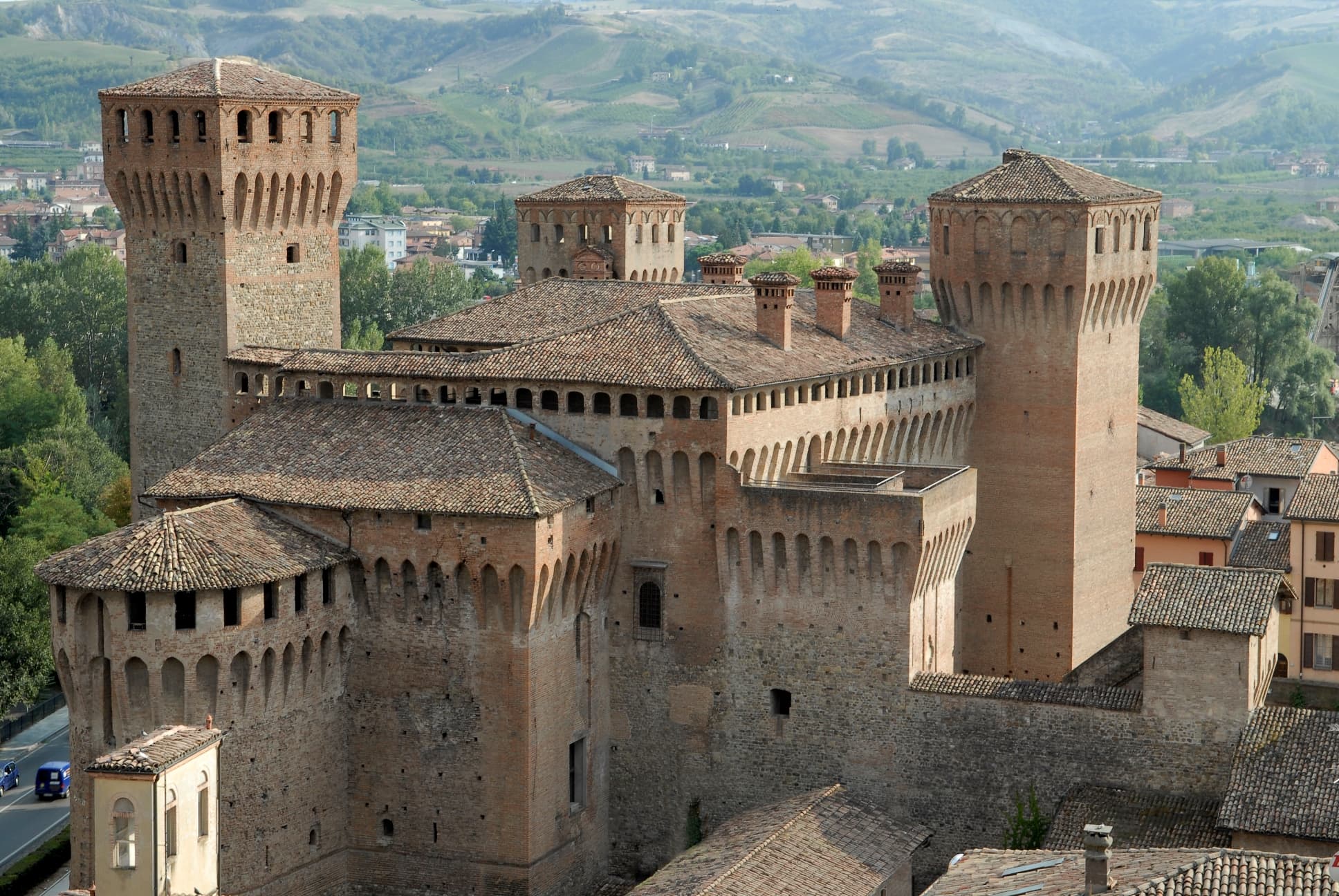
In the green hills of Sassuolo, you can enjoy the divine waters of the Terme della Salvarola spa, not far from all four of Modena’s castles, while the Terme Felsinee spa is also easy to reach from the Rocca di Vignola.
The Castles and Spas section is based on the list of castles mapped by the IBC – Emilia Romagna Cultural Heritage Institute.
Author
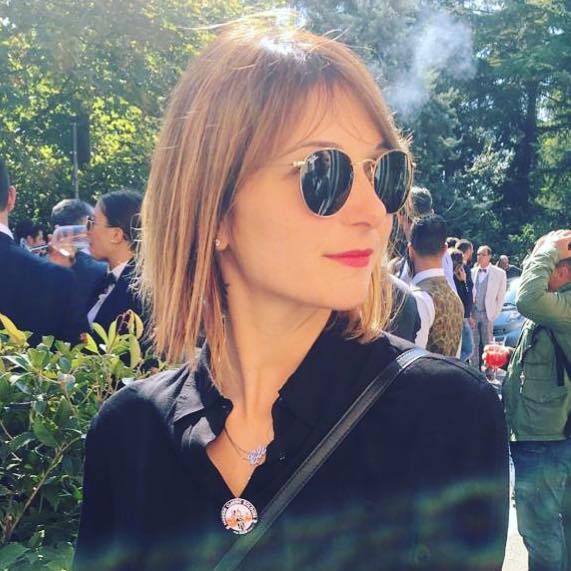
Elisa Mazzini
Social Media Manager for @inEmiliaRomagna and full-time mom.
You may also like
Castles and Thermal Spas in Romagna
by Elisa Mazzini /// December 18, 2024
Historical Spas in Emilia-Romagna
by Elisa Mazzini /// February 17, 2020
Trip out of town from Bologna: a day among abbeys and castles
by Elisa Mazzini /// December 27, 2022

Interested in our newsletter?
Every first of the month, an email (in Italian) with selected contents and upcoming events.
Rocchetta Mattei, a Moorish jewel among Bologna’s Apennines
by Elisa Mazzini /// November 11, 2019
The Caves of Soprasasso, Marvel of the Bolognese Apennines
by Maria Grazia Masotti /// April 3, 2024
